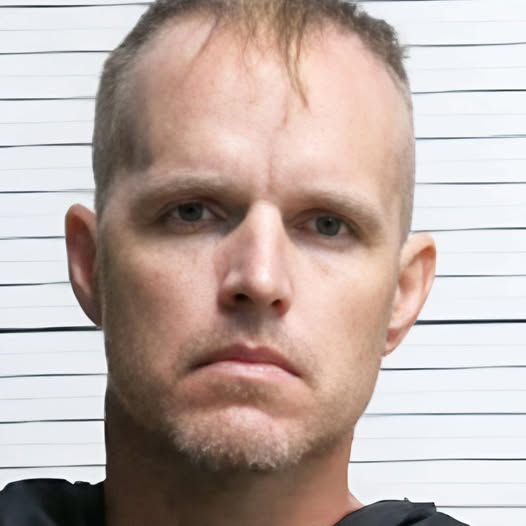The tranquility of a late Saturday evening in Southport, North Carolina, was shattered by an act of senseless violence, transforming a peaceful waterfront bar into a scene of unimaginable horror. The shooting at the American Fish Company, a beloved local establishment, was not a random act of street violence, but a calculated and brutal attack carried out by a former U.S. Marine, Sean William DeBevoise, who also goes by the name Nigel Max Edge. This tragedy left three people dead, eight injured, and countless lives forever altered, and it has raised critical questions about the nature of violence, the accessibility of weapons, and the response of a society that seems to have grown numb to such events.
The incident unfolded with a chilling calmness that belied the brutality to come. Sean William DeBevoise, a man with a military background and a troubled past, casually approached the American Fish Company in a boat. The bar, located on the Southport Yacht Basin, is a place where locals and tourists alike gather to enjoy the scenic views and the camaraderie of a night out. It was a setting of relaxation and community, a place far removed from the battlefields of war. Yet, for reasons that remain unclear, DeBevoise chose this serene environment to unleash a torrent of gunfire, treating the waterfront bar like a combat zone.
The details of the attack are harrowing. Eyewitnesses described a boat pulling up to the dock, followed by the sudden, deafening sound of gunshots. Patrons who were enjoying their evening out, with no warning and no chance to react, were suddenly caught in a hail of bullets. The speed and unexpected nature of the attack created a chaotic scene of fear and panic. As people scrambled for cover and screamed for help, the gunman, DeBevoise, made his escape, loading his boat as if nothing had happened and attempting to flee down the Intracoastal Waterway.
The immediate aftermath was one of chaos and a frantic scramble to save lives. First responders, including the Southport Police Department and the Brunswick County Sheriff’s Office, arrived on the scene to find a horrific tableau. Three people were pronounced dead at the scene, their lives ended by a single, heartless act. Eight more were injured, some critically, and were rushed to nearby hospitals, including Novant New Hanover Regional Medical Center and Dosher Memorial Hospital. Their names have not yet been released, but their stories are now intertwined with this tragedy, as they and their families navigate the long and arduous road to physical and emotional recovery.
The manhunt for DeBevoise was swift and decisive. The U.S. Coast Guard, a vital partner in the response, was able to track him down at a public boat ramp on Oak Island. The suspect was taken into custody without further incident, a small measure of relief in the midst of a community’s pain. His capture was a testament to the quick and effective coordination of law enforcement agencies, but it did not, and could not, undo the damage he had done. The charges against him are grave: three counts of first-degree murder, five counts of attempted murder, and five counts of assault with a deadly weapon. The full weight of the justice system is now poised to descend upon him, but it is a system that, for all its power, cannot bring back the lives that were lost.
The human cost of this massacre is incalculable. The news report notes that families were still waiting for calls that would “destroy their world,” a poignant and painful reminder of the slow-dawning horror that befalls the loved ones of victims. Mothers, fathers, and spouses were still unaware that their person was not coming home. This delay in notification is a common but no less heartbreaking reality in mass casualty events, as authorities work painstakingly to identify the deceased and inform the next of kin. The wait for this phone call is an agony that is difficult to comprehend, a state of limbo where hope and dread exist in a terrifying and unequal balance.
The news report also raises a critical and uncomfortable question: “If he looked different… would it be treated differently?” This question, and the broader observation that there was “no nationwide outrage” and “no wall-to-wall coverage,” points to a troubling trend in our society. The media’s coverage of mass shootings often follows a predictable pattern, one that can be influenced by the race, religion, or background of the perpetrator. The source material for this report suggests that the lack of attention for this particular crime may be due to the fact that the shooter was a former U.S. Marine, a demographic that is often viewed with reverence and respect. The report argues that this should not be the case, that the outrage should be equally fierce, regardless of the perpetrator’s background. A former Marine turning a bar into a “massacre” should be a cause for profound anger and a deep sense of betrayal, not silence.
The victims of this crime, whose names have not yet been made public, deserve to be remembered. Their stories deserve to be told. The news report’s call to “Say his name—and theirs when we get them” is a powerful and necessary plea for accountability and remembrance. It is a demand for the public not to forget the people whose lives were so cruelly taken and for the media to give their stories the attention they deserve. The lives of the three deceased and the eight injured are not just statistics; they are individuals with families, friends, and dreams that were shattered in a single moment.
This tragic event is a stark reminder that violence can erupt anywhere, even in the most seemingly safe and peaceful of places. It is a call to action for a society to confront its demons, to address the underlying causes of such violence, and to be more vigilant in protecting its communities. The story of the Southport massacre is far from over. The legal proceedings against Sean William DeBevoise will unfold, and the victims’ families will begin the slow and painful process of grieving and healing. But the questions raised by this tragedy—about media coverage, societal outrage, and the vulnerability of ordinary citizens—will linger, demanding a conversation that is long overdue. The silence, as the news report so powerfully states, is complicity. And in the face of such a horrific act, silence is simply not an option.


Leave a Reply